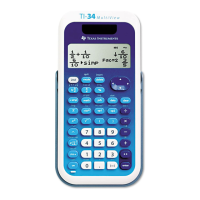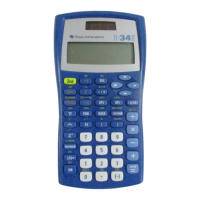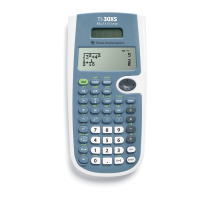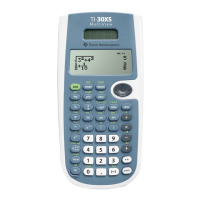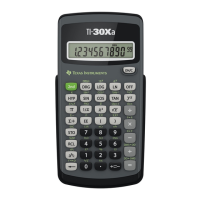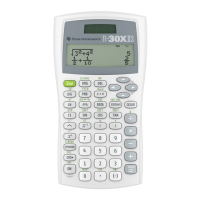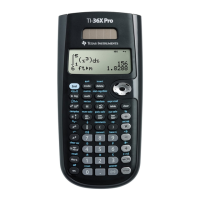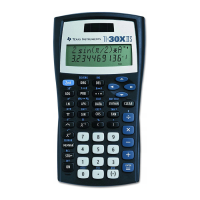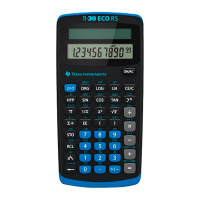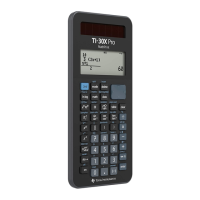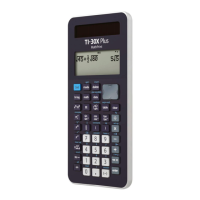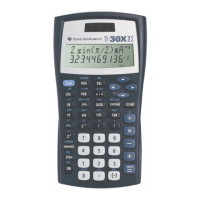35
To define statistical data points:
1. Enter data in L1, L2, or L3. (See Data editor.)
2. Press %t. Select 1-Var or 2-Var and press <.
3. Select L1, L2, or L3, and the frequency.
4. Press < to display the menu of variables.
5. To clear data, press vv, select a list to clear, and
press <.
Examples
1-Var: Find the mean of {45, 55, 55, 55}
xy
Sum of (x …y) for all xy pairs.
a Linear regression slope.
b Linear regression y-intercept.
r Correlation coefficient.
x
' (2-Var)
Uses a and b to calculate predicted x value
when you input a y value.
y
' (2-Var)
Uses a and b to calculate predicted y value
when you input an x value.
Clear all
data
v v $ $ $
Data < 45 $ 55 $ 55 $
55 <
Stat %t
1 $ $
<
Σ
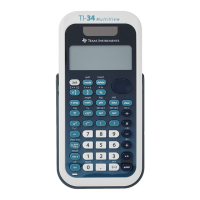
